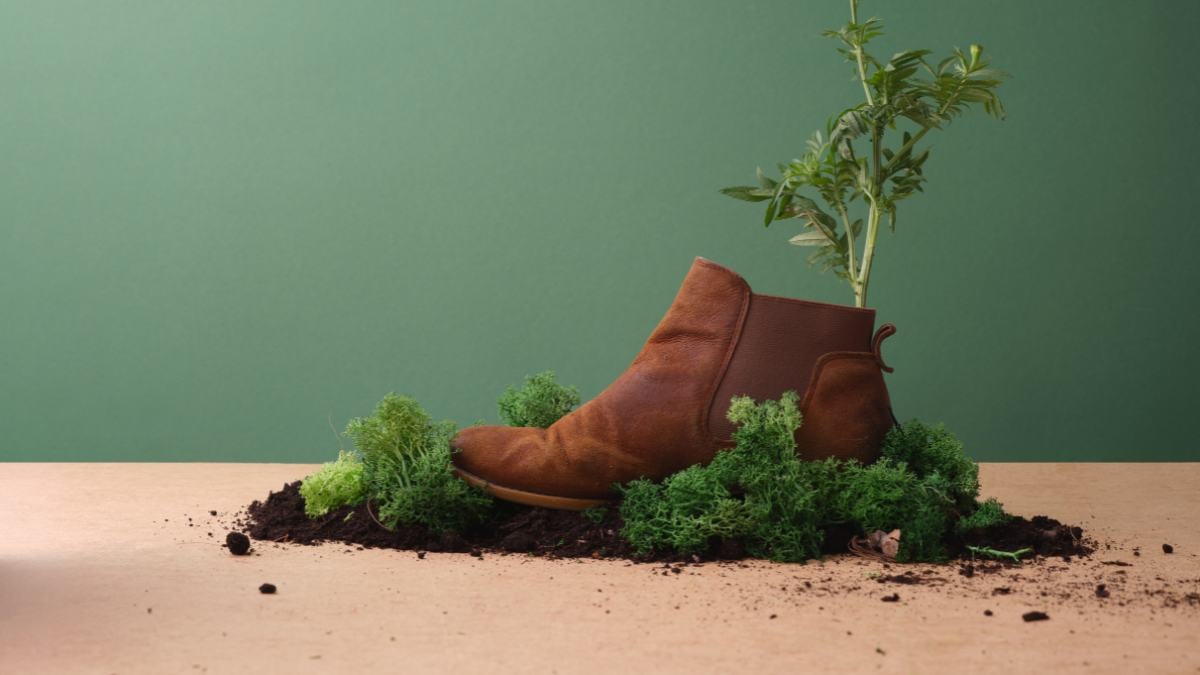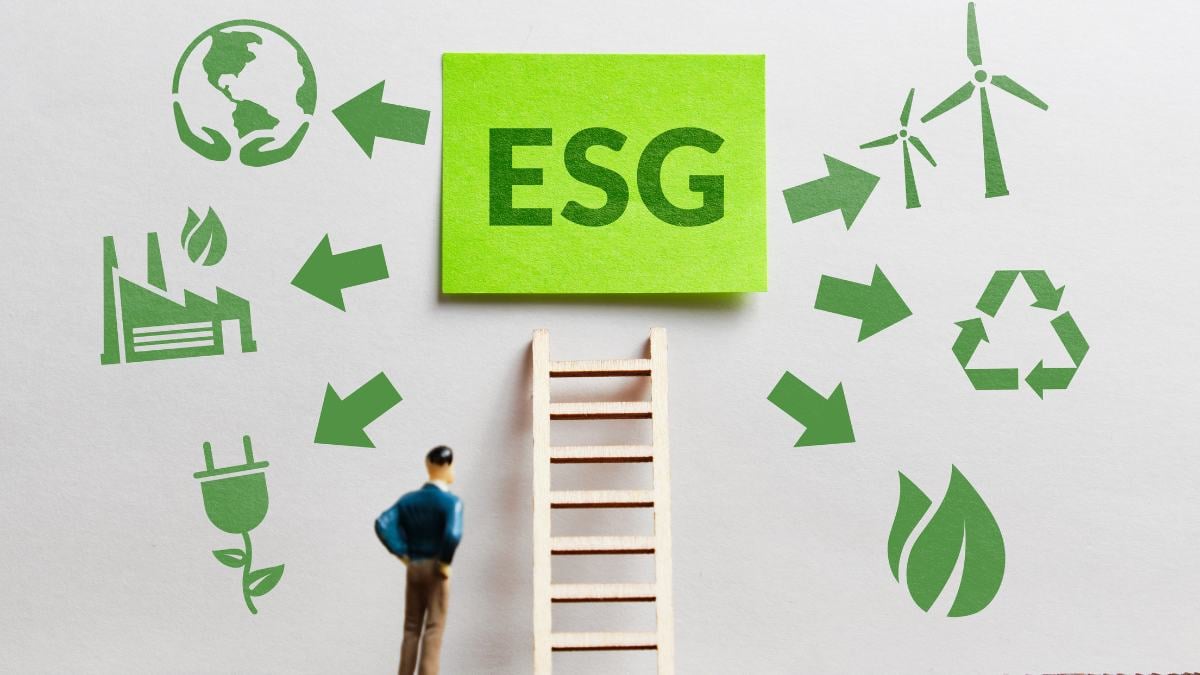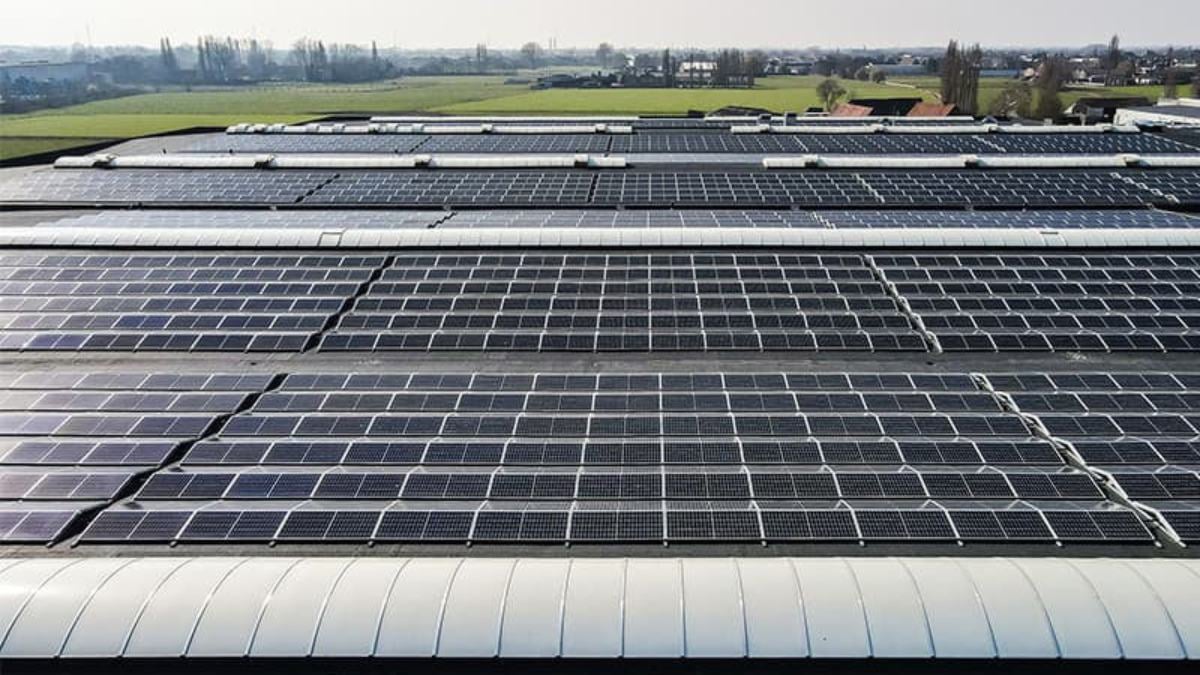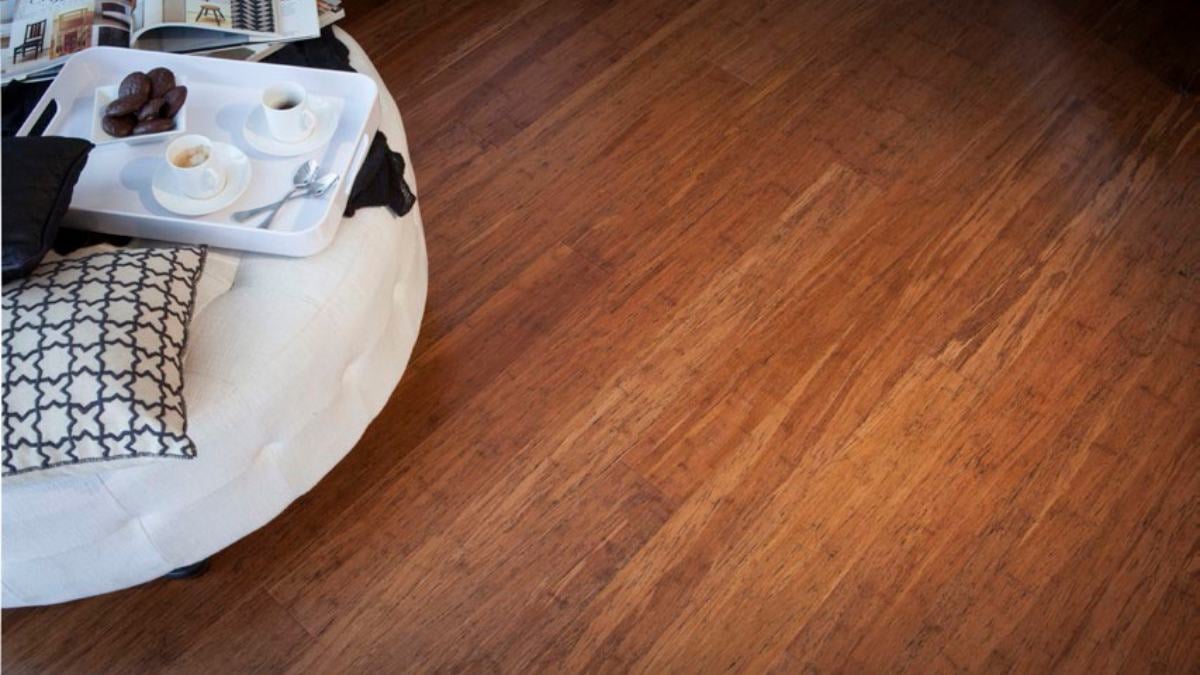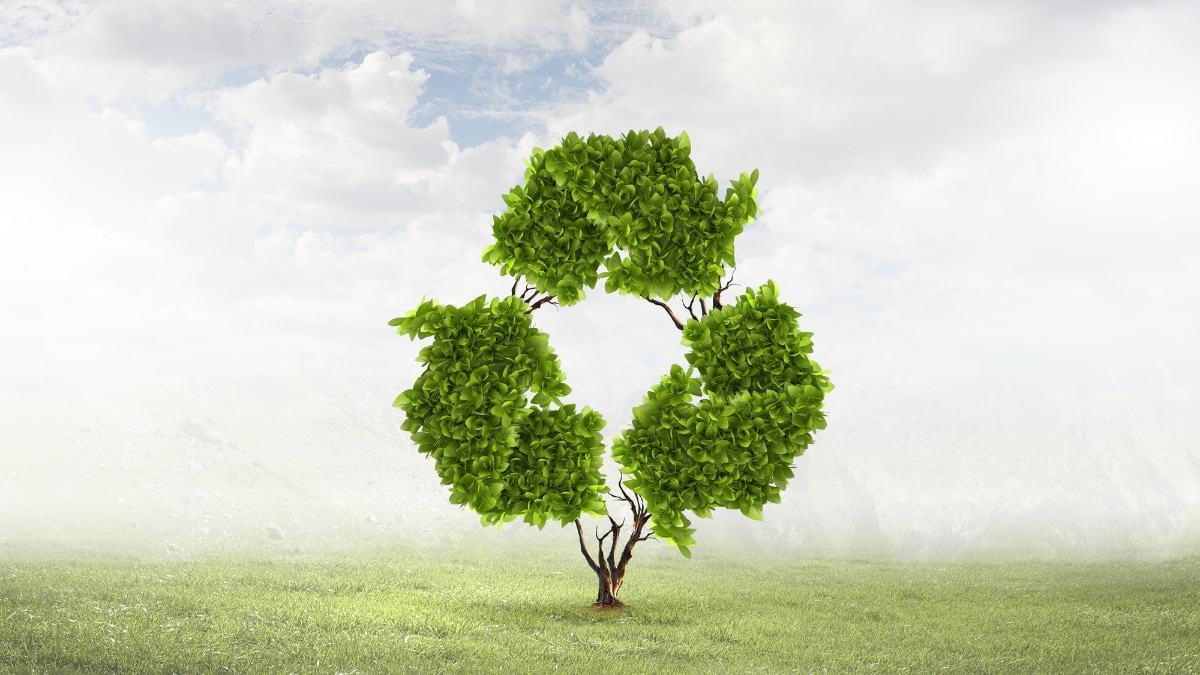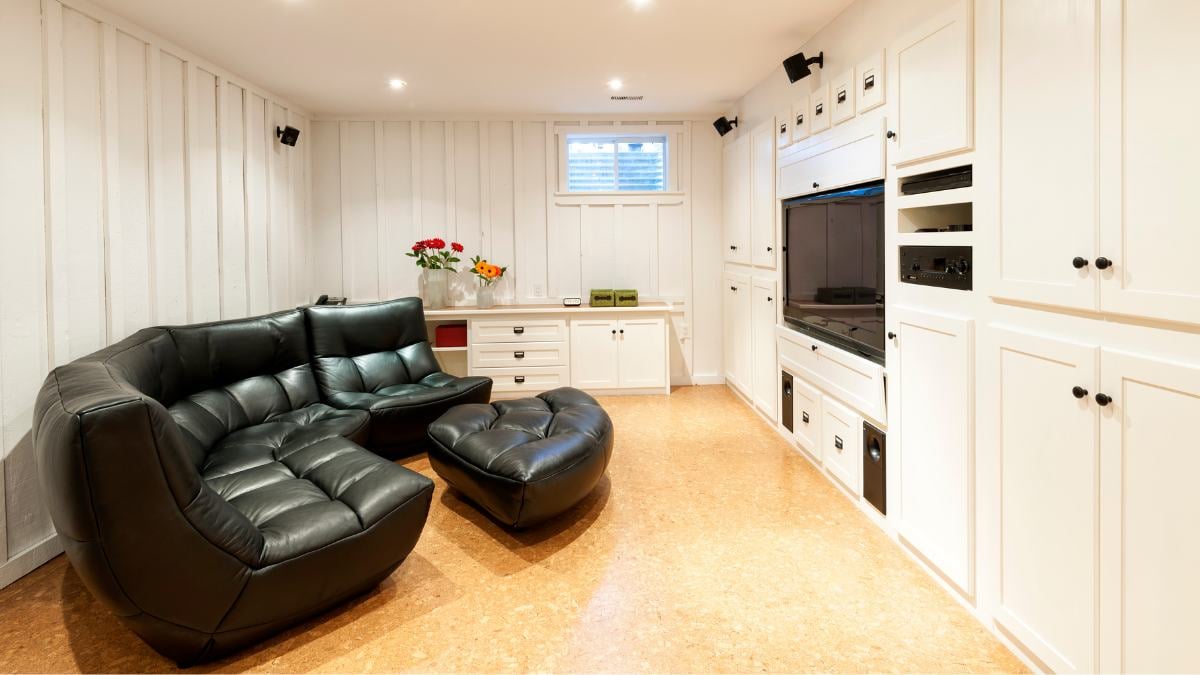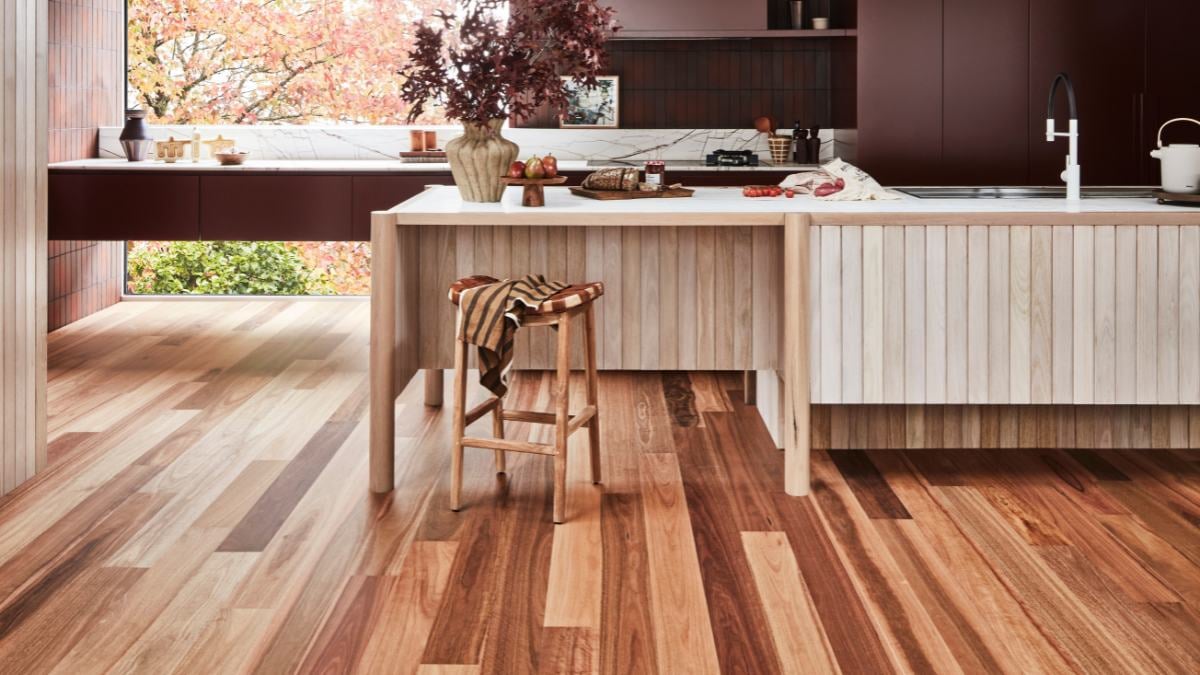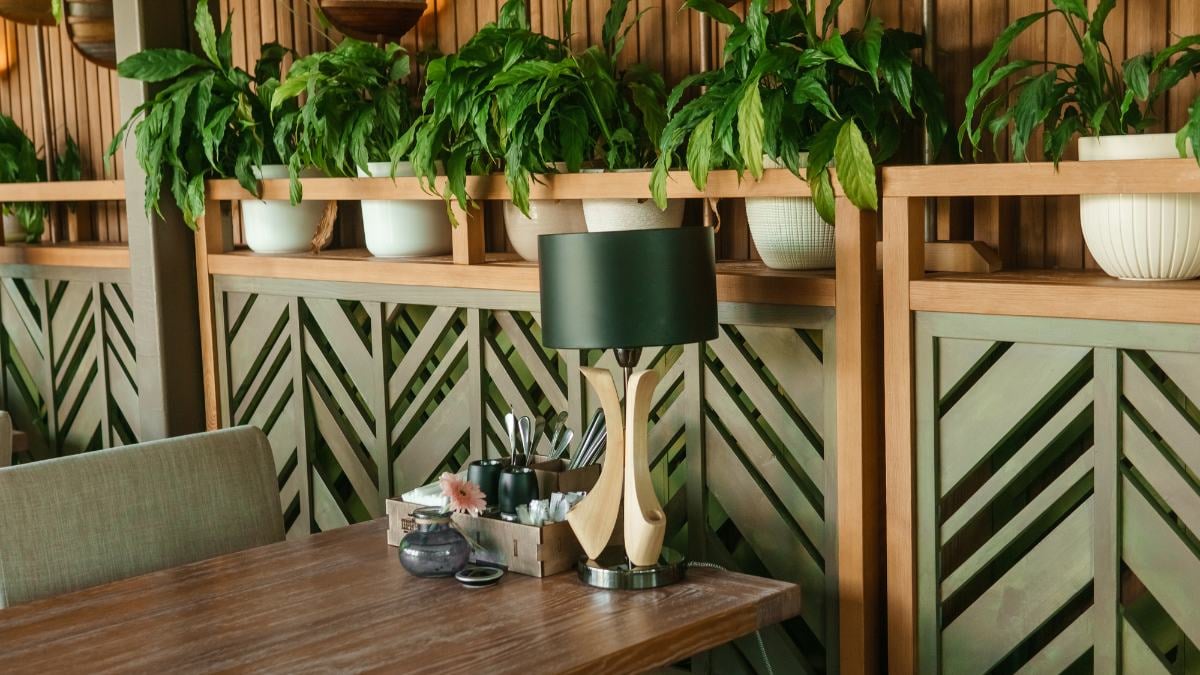The Ultimate Eco-Friendly Sustainable Flooring Guide
Updated:
Published:
Approximate Read Time: 12 Minutes
Welcome, fellow enthusiasts of sustainable living and eco-conscious design! Are you ready to understand and be a part of sustainable flooring solutions? Join us as we explore the intersection of style and environmental responsibility, where the choices we make underfoot reflect our commitment to a greener future.
At Floorworld, we're passionate about sustainability and thrilled to guide you through the latest trends and innovations that promise to transform your living spaces into havens of eco-friendly elegance.
Want to read more? Request our Sustainability eBook: The Environmental Impact of Flooring.
1. Why Care About Sustainability in Flooring?
If it hasn’t been clear already, our world is changing, and we don’t just mean the climate, but the ways governments and organisations are operating.
The call for increased sustainability awareness is based on those who want to create a better future for our planet and future generations.
Governments and companies increasingly recognizing that sustainability isn't a passing trend; it's a fundamental decision that influences every aspect of our lives, from the boardrooms to the living rooms.
Policy decisions, both in the public and private sectors, are being shaped by Environmental, Social, and Governance (ESG) criteria, reflecting a growing demand for transparency and accountability in commitments to sustainability. By adopting eco-friendly practices in our homes, we not only shrink our carbon footprint but also play a vital role in conserving natural resources and adapting to this new shift.
Moreover, sustainable living isn't just about environmental gains; it fosters healthier indoor environments, promoting well-being and a deeper connection with nature.
Less harmful chemicals, more transparent business practices and a push for better quality, long-lasting products remind us that there is much to look forward to when embracing sustainability.
For those just looking for the sustainability essentials, check out our blog: 7 Tips for Choosing Sustainable Flooring.
2. What Makes My Product Sustainable?
So, what exactly makes a flooring product "green" or eco-friendly? Sometimes, it can be hard to decipher, but no worries. Floorworld is here to run you through some considerations to keep in mind.
Transparency and Accountability:
An easy first step is determining how willing a company is to disclose their business practices.
Companies committed to transparency provide clear documentation of their supply chains, detailing where materials are sourced and how they are processed. This documentation should preferably be verified and overseen by third-party organisations such as the Science Base Targets Initiative.
This transparency enables consumers to make informed choices, aligning their purchases with their values.
Accountability comes into play through adherence to industry standards and commitment to sustainable practices.
This commitment to sustainable practices can be seen through organisations focused on reducing the impact of flooring on the environment, such as ResiLoop, Recoflor, and the Vinyl Council of Australia. Organisations that all believe that recycling plays a crucial role in sustainable business practices.
Moreover, accountability involves a commitment to ongoing improvement. Sustainable flooring companies actively engage with stakeholders, seeking feedback and continuously implementing changes to reduce environmental impact.
This means announcing targets and sticking to them, such as pushing for net emissions or commitments to contributions to initiatives such as the Paris Agreement.
By prioritizing transparency and accountability in business practices, sustainable flooring companies not only build trust with consumers so that they can make purposes that align with their values but also drive to drive positive change within the industry.
Your Flooring's Production Process
One key aspect of sustainable production processes is waste reduction. Companies implement measures to minimize waste generation during manufacturing, such as optimizing material usage and implementing recycling programs for production by-products.
Closed-loop systems play a crucial role in sustainable production processes. These systems enable companies to recycle and reuse materials within their production facilities, minimizing the need for virgin resources and reducing waste generation.
Renewable resources are another focus of sustainable production processes in flooring. Companies prioritize the use of renewable materials, such as bamboo, cork, and reclaimed wood, which can be sustainably harvested without depleting natural ecosystems.
Additionally, sustainable flooring companies invest in renewable power generation to reduce their reliance on fossil fuels and minimize greenhouse gas emissions. Through the installation of solar panels, wind turbines, and other renewable energy systems, companies generate clean energy to power their manufacturing facilities.
Overall, sustainable production processes in flooring prioritize waste reduction, closed-loop systems, renewable resources, and renewable power generation to minimize environmental impact and promote sustainability throughout the production lifecycle.
Embracing Eco-Friendly Materials:
When it comes to enhancing your eco-conscious lifestyle, selecting suitable materials is paramount.
Bamboo stands out as a premier timber flooring choice, effortlessly merging sustainability with visual charm. Its rapid growth cycle not only makes it a renewable resource but also alleviates pressure on traditional hardwood forests, all while providing the same elegance and allure.
With its inherent durability and moisture resistance, bamboo finds its place in high-humidity areas like kitchens and bathrooms, showcasing its versatility. Furthermore, its natural variations in colour and grain patterns add a distinctive character to any interior, effortlessly complementing a variety of design styles.
Wool can also be a great choice to consider for those of you looking for carpet options. Harvested from natural fibres sheared from sheep, wool carpets embody a renewable resource that aligns with the ethos of environmentally conscious living.
Unlike synthetic alternatives derived from non-renewable petrochemicals, wool fibres are sourced from renewable sheep farms, ensuring a sustainable supply chain that minimizes carbon emissions and reduces reliance on finite resources.
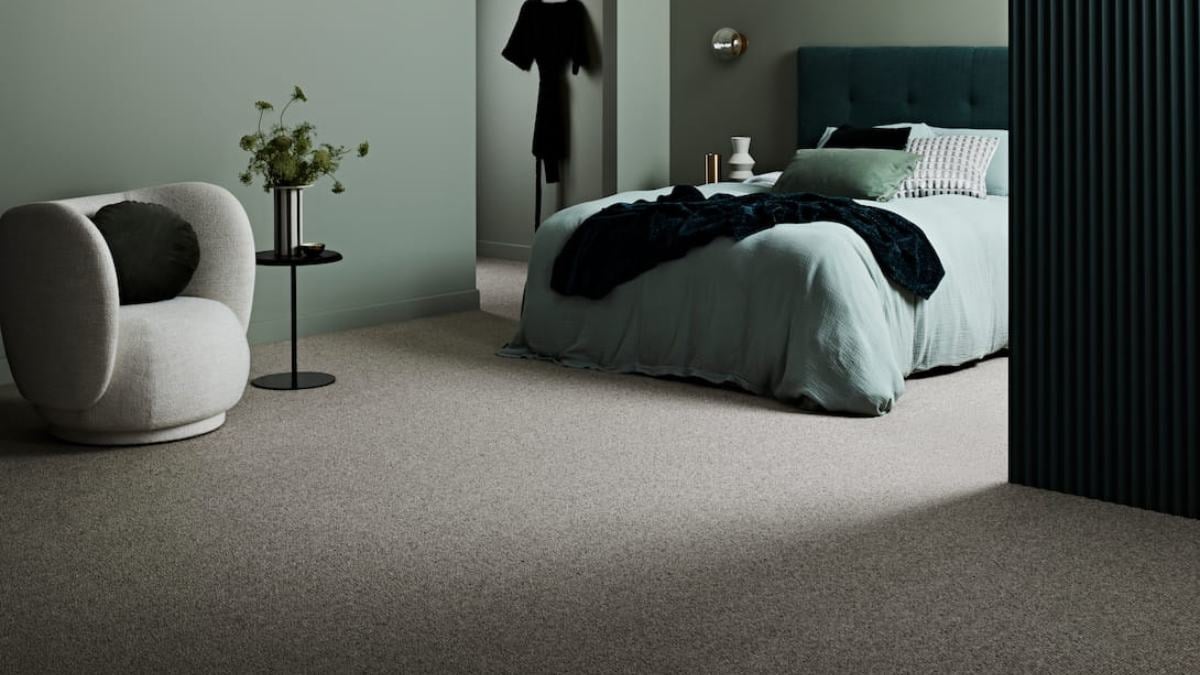 Recycled materials like timber open up another pathway to eco-friendly flooring solutions. Repurposing discarded resources through recycling breathes new life into materials while significantly reducing environmental impact.
Recycled materials like timber open up another pathway to eco-friendly flooring solutions. Repurposing discarded resources through recycling breathes new life into materials while significantly reducing environmental impact.
Recycled timber flooring preserves the history and character of reclaimed wood, infusing spaces with depth and authenticity.
Delving into non-traditional options like linoleum and cork unveils sustainable alternatives boasting distinct advantages. Linoleum, crafted from natural materials such as linseed oil, cork powder, and wood flour or cork flooring, is sourced from the renewable bark of cork oak trees. Both present durable, sustainable choices.
Longevity and the Life of Your Product
Some don't consider this when making sustainable purchase choices. The longevity of flooring products is a crucial factor in sustainability, as it directly impacts the amount of waste generated from removal and replacement processes.
Careful maintenance plays a significant role in prolonging the life of flooring products. Regular cleaning, polishing, and sealing help protect the flooring's surface, preventing damage from dirt, moisture, and everyday wear and tear.
By implementing proper maintenance practices, homeowners can extend the lifespan of their flooring, reducing the need for premature replacement and conserving resources.
Durability is another crucial attribute of sustainable flooring products, particularly in high-traffic areas such as entryways, hallways, and living rooms. Sustainable flooring options should be able to withstand heavy foot traffic, furniture movement, and other sources of wear, ensuring long-lasting performance and minimal need for repairs or replacement.
Certain flooring types offer greater ease of repair compared to others, further enhancing their longevity and sustainability. For example, modular flooring systems and click-lock installation methods allow for individual planks or tiles to be replaced without requiring extensive demolition or replacing the entire floor. This targeted approach to repair reduces material waste.
The longevity of flooring products is intricately linked to sustainability, as it reduces waste generation, conserves resources, and minimizes environmental impact. Through careful maintenance, durability in high-traffic areas, and ease of repair, sustainable flooring options offer a sustainable solution for homeowners seeking long-lasting, eco-friendly flooring solutions.
For more on how to clean and maintain your flooring, read our Blog posts on: Timber, Vinyl, Laminate, and Carpet.
Buying Local and Australian Made
Here's one that's a little close to home. Choosing to buy locally when selecting flooring materials is a powerful way to promote sustainability and reduce environmental impact.
One of the primary benefits of buying local flooring products is the reduction in transportation-related emissions. By sourcing materials from nearby suppliers, the need for long-distance transportation is minimized, resulting in lower carbon emissions associated with shipping and logistics. This localized approach helps reduce the flooring industry's environmental footprint and supports the development of regional economies.
Additionally, buying locally fosters a sense of community and strengthens connections between consumers and local businesses. Supporting local manufacturers and suppliers contributes to the vitality of regional economies, creating jobs and opportunities within the community.
Furthermore, buying locally often means choosing products that adhere to stringent environmental and labour standards. Local manufacturers are more likely to prioritize sustainable practices, such as responsible sourcing of materials, energy-efficient production processes, and ethical labour practices.
To learn more about the advantages of Australian-Made, check out our latest blog post: From Quality to Community: The Power of Australian-Made.
Sustainable Certifications and Labels
We know that understanding all the different certifications and labels out there can be confusing. So, the team at Floorworld has just collated a few of the key ones with links to their respective organisations to help keep you informed:
List of Key Sustainable Certification and Labels:
- Australian Carpet Classification Scheme (ACCS)
- Declare.
- Ecolabel Index emission class
- Ecovadis
- Emissions Dans L’air Interieur Certification
- Environmental Certification Scheme (ECS)
- Environmental Product Declaration (EPD)
- Forest Stewardship Council Certification (FSC)
- Programme for the Endorsement of Forest Certification (PEFC)
.jpg?width=960&height=540&name=Certification%20Label%20Eco%20Banner%20(1).jpg)
3. Maximizing sustainability: The Role of Flooring in Green Building Certification
Selecting sustainable flooring is crucial for achieving certification under green building standards like LEED (Leadership in Energy and Environmental Design) and Green Star. These certifications assess buildings based on various sustainability criteria, including energy efficiency, indoor environmental quality, and materials used. Here's how choosing sustainable flooring can contribute to earning points in these systems:
Materials and Resources:
-
Sustainable Sourcing: Flooring materials sourced or manufactured sustainably can earn points. For example, materials certified by the Forest Stewardship Council Certification (FSC) ensure that forests are responsibly managed.
-
Recycled Content: Using flooring materials with recycled content reduces demand for virgin resources and minimizes waste. Green Star rewards materials with lower environmental impact.
-
Regional Materials: Opting for local materials reduces the environmental impact of transportation, contributing to credits.
Indoor Environmental Quality:
-
Low-Emitting Materials: Flooring with low levels of volatile organic compounds (VOCs) improves indoor air quality, earning points. Products with Emissions Dans L’air Interieur Certification and Red List Free, amongst other certifications, indicate tested VOC emissions.
-
Acoustic Performance: Certain sustainable flooring options, like cork, enhance acoustic performance, creating a healthier and more comfortable indoor environment recognized by green building standards.
Innovation and Design Process:
Innovative Strategies: Using sustainable flooring materials innovatively earns additional points. For instance, implementing flooring systems that contribute to energy efficiency or incorporate cutting-edge sustainable technology is recognized.
Resource Efficiency:
Durability and Lifespan: Durable flooring materials needing less frequent replacement contribute to resource efficiency. Long-lasting materials reduce resource consumption over the building's life cycle, aligning with sustainable design principles.
Waste Reduction: Choosing flooring materials that are easily recyclable at the end of their life cycle or from waste-reducing manufacturing processes contributes to resource efficiency credits.
4. Sustainable Design Options
So, now that we've delved into sustainable flooring and the importance of checking materials and labels, let's shift gears and chat about how to design spaces that reflect your commitment to sustainability.
Biophilic Design
Biophilic design represents a profound shift in how we conceive and experience interior spaces, placing nature at the forefront of design innovation. At its core, biophilic design acknowledges the inherent human need for contact with nature and seeks to emulate natural elements within interior spaces.
From incorporating natural light and ventilation to integrating living greenery and organic materials, biophilic interiors evoke the therapeutic qualities of the outdoors, promoting health, well-being, and productivity.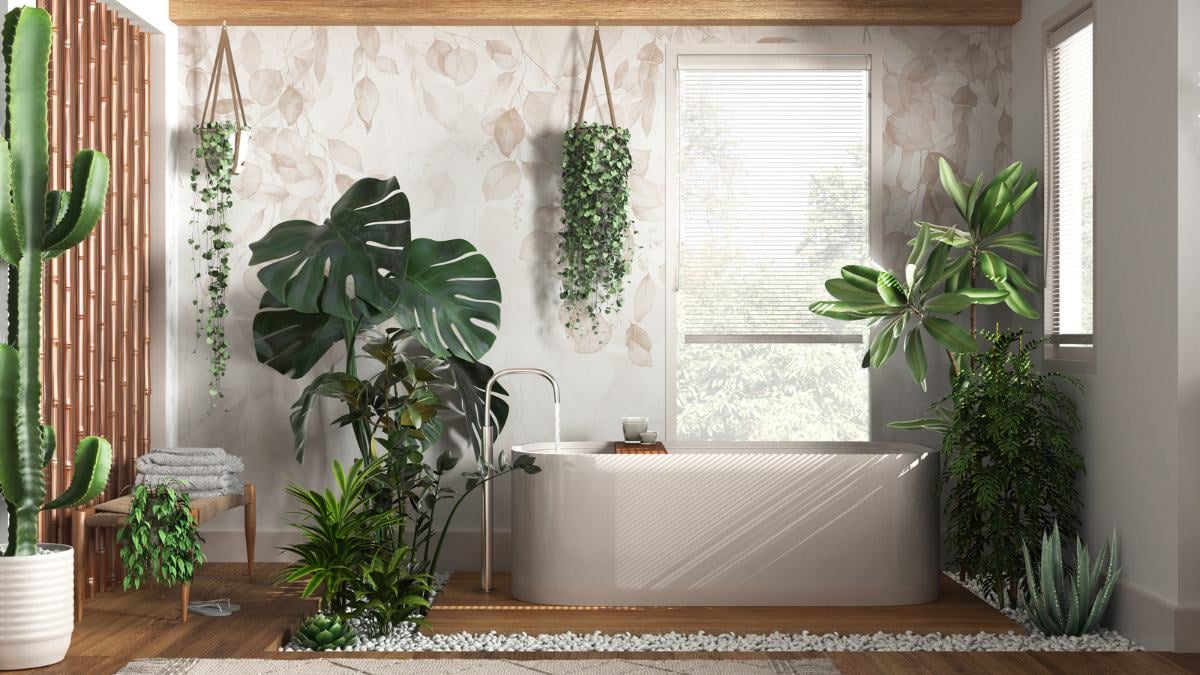
The concept of biophilia is central to biophilic design, which recognizes the intrinsic human affinity for nature and its positive impact on our physical and emotional well-being. By incorporating elements such as natural light, water features, and views of nature, biophilic interiors create environments that reduce stress, enhance creativity, and improve cognitive function.
Biophilic interiors promote environmental stewardship and responsible resource consumption by reconnecting individuals with nature and fostering a deeper appreciation for the natural world.
For more on biophilic design, read our blog post: Bringing the Outdoors In Embracing the Biophilic Home Design Trend.
In your journey to create a home that is not only eco-friendly but also resonates with contemporary style, it's essential to consider how your sustainable flooring choices integrate with broader interior design trends. Sustainability and style are not mutually exclusive; in fact, they complement each other beautifully in today's design world.
As you explore various sustainable flooring options, consider how these choices align with the latest trends in interior design. Whether it's the natural elegance of bamboo and cork floors or the rustic charm of recycled timber, your eco-conscious decisions can also be a significant style statement.
To help you envision how sustainable flooring can be incorporated into modern interiors, we invite you to explore our "Ultimate Guide to Interior Design Trends." This guide provides a wealth of information on how current trends embrace sustainability, offering inspiration and practical tips for harmonizing your eco-friendly choices with cutting-edge design.
Whether you're renovating your home or just looking to refresh your space, understanding how sustainable materials and design trends intersect will empower you to make choices that are good for the planet and on-trend.
Explore the Ultimate Guide to Interior Design Trends to discover how you can create a stylish and sustainable space.
Hopefully, reading through this Ultimate Eco-Friendly Sustainable Flooring Guide has been helpful for you in making informed decisions for an eco-friendly and stylish home. From grasping the significance of sustainable flooring to navigating the latest trends, choosing appropriate materials, and embracing practices that foster durability and minimal environmental footprint, this guide encompasses every facet of crafting a sustainable living environment.
By opting for eco-conscious flooring options, advocating for responsible sourcing and production, and integrating sustainable routines into your household, you contribute positively to the planet.
Want to dive even deeper? Request our Sustainability eBook: The Environmental Impact of Flooring.
5. FAQ Section
Why is sustainability important in interior design or Flooring?
Sustainability in interior design or flooring is crucial because it reflects a commitment to reducing environmental impact, conserving natural resources, and fostering healthier indoor environments. It aligns with global efforts towards a more sustainable future, involving transparent business practices and high-quality, long-lasting products.
For more, check out our blog: 7 Tips for Choosing Sustainable Flooring.
What makes a flooring product sustainable?
There is no hard set definition, but generally, a flooring product can be considered sustainable if it involves some level of transparency in business practices, accountability to sustainability commitments, uses eco-friendly materials, and follows sustainable production processes. This includes using renewable resources, reducing waste, and investing in renewable energy.
How can I ensure my interior design and flooring choices are eco-friendly?
To ensure your design or flooring choice is eco-friendly, see how companies disclose their business practices, prioritize sustainable materials like bamboo and wool, and consider products' longevity and maintenance requirements. Additionally, choosing locally made products and looking for sustainable certifications can guide your decisions.
What are the benefits of bamboo and wool in flooring?
Bamboo flooring is highly renewable, durable, and suitable for high-humidity areas, offering a stylish and sustainable option. Wool carpets, sourced from renewable sheep farms, provide a natural, durable, and eco-friendly choice, reducing reliance on synthetic materials.
How does the production process affect sustainability?
Sustainable production processes focus on waste reduction, closed-loop systems, renewable resources, and renewable power generation. These practices minimize environmental impact, conserve resources, and support the sustainability of the flooring products.
Why is buying local and Australian-made beneficial?
Buying local and Australian-made reduces transportation-related emissions, supports regional economies, fosters community connections, and often means choosing products that meet higher environmental and labour standards.
What are some critical sustainable certifications and labels to look for?
We have a section on different certifications and labels to watch out for above. But some key ones include the Australian Carpet Classification Scheme (ACCS), Carbon Neutral, Certified B-Corp, Forest Stewardship Council Certification (FSC), and Programme for the Endorsement of Forest Certification (PEFC). These labels indicate adherence to various sustainability and environmental standards.
What is biophilic design, and how can it reflect my sustainable design choices?
Biophilic design incorporates natural materials and elements that connect indoor spaces to the natural world. This approach promotes health, well-being, and environmental stewardship, aligning with sustainability principles.
For more, read our blog post: Bringing the Outdoors In Embracing the Biophilic Home Design Trend.
How can I maintain my flooring to ensure its longevity?
It really depends on the type of flooring you have, but generally, you should engage in regular cleaning, polishing, and sealing as appropriate for the material. Implement proper maintenance practices to protect the flooring and extend its lifespan, reducing the need for premature replacement.
For more on how to clean and maintain your flooring, click on the type of Flooring you have: Timber, Vinyl, Laminate, and Carpet.
If you want more insights on flooring maintenance, trends, or design tips, fill out the form below to request a Floorworld eBook.

